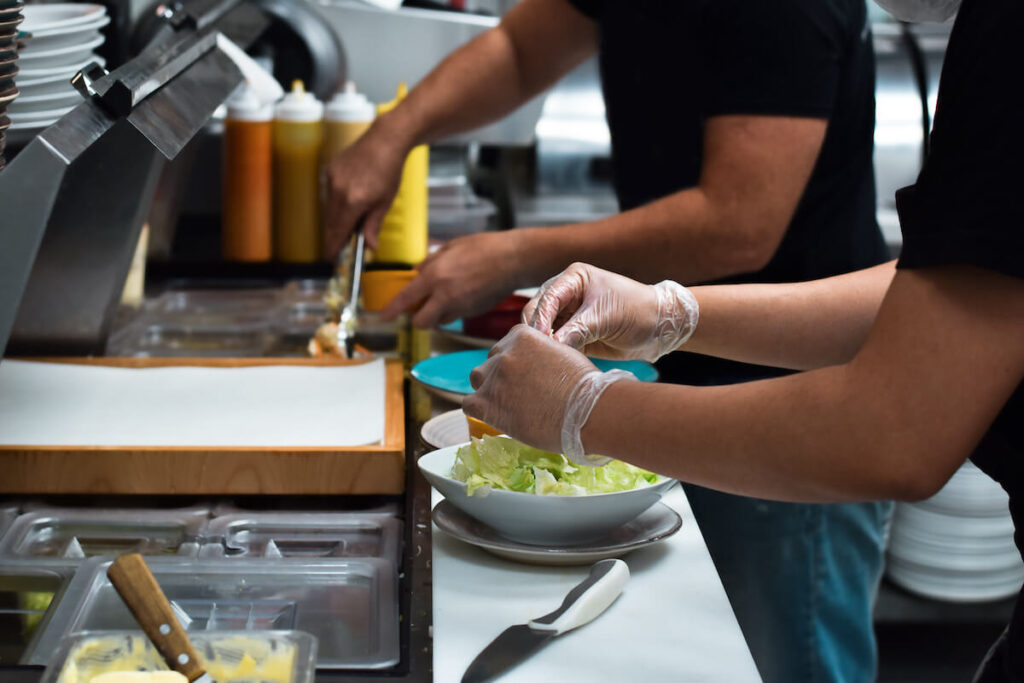Key Takeaways:
- Phone orders are more important than ever for restaurants to maintain and grow sales
- Traditional restaurant phone lines are causing restaurants to lose countless dollars from missed calls
- New technology exists for restaurants to capture every phone order, every time, without their staff needing to lift a finger
A 2022 survey showed 60% of Americans get takeout or delivery orders at least once per week, where 70% of survey respondents reported preferring to order directly from a restaurant rather than a third-party food delivery service like Grubhub, Uber Eats or DoorDash. Even though online ordering systems continue to record an increasing share of total restaurant food orders, phone orders remain a staple revenue source of the restaurant industry.
The upheaval to restaurants from the pandemic emphasized the need for restaurant owners to offer effective contactless and remote ordering solutions. Local officials in most parts of the country responded to the coronavirus outbreak by instituting lockdowns and stay-at-home orders, reducing or entirely eliminating dine-in revenue for thousands of quick-service restaurants (QSR). Many guests have become so used to phone and online food ordering that these are still the primary sales and profit streams for many restaurant operators.
Restaurant owners across the country are seeing this unprecedented increase in food orders as an opportunity to serve more guests and take their businesses to new heights. Using voice AI, also known as conversational AI, these restaurants are revolutionizing their restaurant ordering practices by utilizing artificial intelligence to handle the load.
Is your outdated phone system losing you money?

Restaurant owners have to face many challenges keeping things running, especially during a pandemic. In order to succeed, it’s important to maximize the effectiveness of your streams of revenue. Phone orders still make up 28% of total restaurant food sales, despite competition from desktop and mobile delivery apps. That 28% of sales comes over analog phones and digital phone systems where an employee has to stop preparing food to answer the phone, or let other calls coming in go unanswered. Having too few resources to handle incoming guests is leaving money on the table and taking away from restaurant growth.
Data collected by Finances Online reveals that quick-service restaurant operators nationwide have similar concerns about the state of the business in 2022: 74% report staffing shortages, 59% have higher labor costs as a percentage of sales and 86% of restaurants totaled lower annual revenue than pre-pandemic. Amid such a grim financial landscape, restaurant owners literally can’t afford to lose profits due to unanswered calls or excessive average hold times.
Research shows that 50% of callers hang up after 90 seconds on hold, while survey respondents state they are only willing to wait for a maximum of two minutes to speak to someone before giving up. Whether a restaurant is understaffed or just unusually busy, it’s clear that potential guests have limited patience for lengthy hold times and will quickly choose to order from a competitor if they don’t get an answer fast. Some restaurants have turned to call centers to help, but even then, guests can be placed on long holds during peak times.
6 ways you’ll improve restaurant phone ordering with voice AI

The ongoing Great Resignation continues to cause labor shortages in many industries, especially food service. Staff shortages and overwork often result in missed customer calls or rushed phone orders, and therefore lower ticket sales and less customer retention. Fortunately, voice AI is here to solve a problem plaguing restaurant operators by automating the ordering process. Restaurants that use conversational AI ordering assistants are seeing higher average tickets up to 15%, increases in gross margins up to 25%, and up to 2X productivity. Let’s dive into the benefits of using voice AI to take restaurant phone orders.
1. Better service standards
Restaurant guests have lots of dining options, so conscientious, personalized service is an absolute must. Guests expect to be able to customize their food orders and substitute menu items with alternatives (e.g., vegetarian or other meatless options). Voice AI ordering assistants can have a natural conversation with guests and offer relevant menu recommendations, including upsells and suggested add-ons. AI ordering platforms can complete just about any order independently, but the system also gives guests the option to talk to a team member if they want to. Voice AI provides that one-on-one attention that every guest deserves, saving guests from the undesirable situation where they’re rushed, placed on long holds or they get busy signals because staff are too busy to pick up the phone.
2. No missed calls
A restaurant that uses voice AI can take limitless calls at the same time, since voice AI assistants can automatically answer every call that comes in. That means no more missed calls when phone lines are busy or the hold time is too long. This freedom allows restaurant leadership to reassign point of sale workers to other duties. Rather than multitask with multiple job roles like answering phone calls or entering guest orders as a line builds up, team members instead can focus on meal prep and order fulfillment, handling guest questions and other high-value tasks for excellent in-person service.
3. Increased ticket sizes and higher sales
Not only can restaurant owners compensate for staffing issues, but they also can improve order fulfillment speed and total ticket sales thanks to conversational AI in their phone ordering. As team members are reallocated to focus on preparing food and filling orders, their productivity increases because they don’t have to juggle with answering the phone and manually taking orders. Powered by machine learning and natural language processing, AI virtual ordering assistants increase average ticket sizes and same-store sales, bolstering a restaurant’s bottom line.
4. More productivity and happier staff
The financial benefits of voice AI extend beyond more phone orders and higher sales figures: team members are the most important resource for any restaurant operator, and voice AI improves staff morale by sharing the workload. So even when working a short-staffed or unusually busy shift, restaurant workers won’t need to cover too many tasks at once because the phones are covered. This allows them a less stressful and chaotic work environment and helps them be more productive, as they’re focused entirely on order fulfillment and service to walk-in guests.
5. Greater staff retention and lower training and onboarding costs
High employee turnover is one of the most challenging hurdles for businesses, and the food service sector deals with more than its fair share of staff retention issues. Voice AI not only compensates for labor shortages but also reduces turnover and increases employee retention, eliminating burnout and improving team morale. Hiring and training staff are among the most expensive and time-consuming aspects of the restaurant business. Restaurant operators using voice AI to automate their phone orders and ordering on other channels can avoid those costs and instead invest the saved funds back into their restaurant.
6. Easy installation and training with no startup costs
Restaurant owners and operators don’t have to buy special equipment or make major changes to their store just to be able to install a new technology platform, such as voice AI. Voice AI easily integrates with a restaurant’s existing digital system, provided the restaurant already uses a digital phone system. Voice AI provider ConverseNow handles the heavy lifting with connecting to a restaurant’s existing phone lines and POS systems.
It’s also not necessary to provide special training to restaurant staff members. Once the virtual ordering assistants are up and running, any orders taken by voice AI will pop up in the POS system as usual, and staff can focus on order fulfillment without worrying about answering phone calls.
Increase revenue, improve phone ordering process with voice AI

Best practices in the restaurant business are constantly changing, and complacently sticking with the same operating strategies may cost owners a lot of money in lost sales. Restaurant AI automation is a proven solution and delivers superior results compared to other service methods.
ConverseNow’s voice AI ordering assistants now operate in over 1,100 restaurants across 40 U.S. states, including major quick-service restaurant brands such as Domino’s, Fazoli’s and Blake’s Lotaburger. Our industry-leading voice AI stands ready to answer all order and non-order calls on your restaurant’s phone lines, leading to increased profits and a more efficient phone ordering process.
Increase your restaurant’s revenues by modernizing your restaurant brand with ConverseNow’s best-in-class voice AI ordering assistants. Schedule a demo today.




